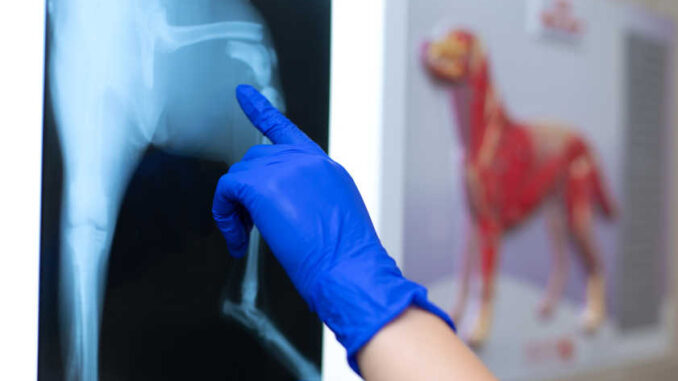
Pet parents often encounter a variety of health issues with their dogs, and among them, limping and shaking are common. But when they occur together, prompt veterinary treatment is needed as it may indicate the presence of significant pain, weakness, stress, or underlying medical condition. Let’s explore some possible causes and approaches to this issue.
Why is my dog limping & shaking at the same time?

Dogs can limp for a variety of reasons, ranging from minor to serious health concerns. Possible causes of limping include:
- Injury – Acute injuries, such as muscle strains, sprains, or fractures, can cause limping. These may result from accidents, falls, or rough play. Another common injury is a torn cranial cruciate ligament.
- Joint issues – Joint problems such as arthritis, hip dysplasia, elbow dysplasia, and luxating patella are other common causes of limping, and often worsen with age.
- Foreign object – A foreign object, such as a splinter or plant material, can become lodged in a dog’s paw, leading to discomfort and limping.
- Paw injury – Cuts, abrasions, burns, torn nails, mass or growth, or infection (pododermati)
- Neurological issues – Limping can also be a sign of a neurological issue, such as intervertebral disc disease.
- Infection, inflammation, or cancer – Systemic infection, such as Lyme disease, or localized infections in the paw or joints can also cause limping, among other clinical signs.
What does it mean if my dog is also shaking?
Dogs can also shake for a variety of reasons, as outlined in our article Dog Shaking? 7 Easy Questions to Find Out Why + Vet Advice. Factors such as anxiety, pain, cold temperatures, seizures, and other underlying medical conditions can all play a role, however, if your dog is limping AND shaking, it is most likely due to significant pain, stress, or weakness. This could be associated with:
- A severe trauma or injury causing shock or pain
- A neurological issue such as intervertebral disc disease
- Muscle weakness or atrophy
- A systemic (affecting other areas of the body) disease or infection such as Lyme disese or distemper
Related veterinarian articles: front-leg limping, back-leg limping.
How to figure out the cause of your dog’s limping and shaking
Your vet may take the following steps to determine the underlying cause of your dog’s limping and shaking:
- History – Your vet will need to know when the limping and shaking started, as well as any other clinical signs that you have noticed at home.
- Physical exam – Your vet will perform a nose-to-tail physical exam and watch your dog walk. They will pay special attention to your dog’s paws and limbs to look for injury, growths, or infections.
- Orthopedic and neurological exams – These detailed exams focus on the bones, joints, muscles, reflexes, and other aspects of the musculoskeletal and nervous systems.
- Bloodwork – Your vet may recommend bloodwork to evaluate overall health and organ function and look for evidence of systemic disease.
- Imaging – X-rays are the best way to evaluate for bony injuries or changes associated with arthritis. While swelling may be noted on an x-ray, many soft tissue injuries will not be visible. Depending on your dog’s clinical signs and history, your vet may also recommend additional imaging such as chest and abdominal X-rays, or ultrasound.
- Cytology or culture – If your dog’s paw appears infected, your vet may take a small sample from the skin to evaluate under the microscope. This can help them determine if infection is present, and if it is caused by yeast, bacteria, or both. A culture can be used to definitively diagnose the cause of infection and determine which medications it will respond to.
- Biopsy of a mass or growth – To determine what it is and if it is cancerous or benign.
Treatments will vary depending on the underlying cause, and may include at-home care such as strict rest for soft tissue injuries, surgical repair for fractures or a torn ACL, medications for infection, pain, and inflammation, or hospitalization for severe injuries, trauma, or disease.
When is it time to see your veterinarian?
If a dog is limping and shaking, they need prompt veterinary attention. Limping and shaking may be signs of significant pain, stress, weakness, or an underlying medical condition. Signs that indicate the need for emergency vet care include:
- Other concerning symptoms, such as fever, lethargy, restlessness, loss of appetite, swollen joints, vomiting, diarrhea, and difficulty breathing
- Severe pain or distress
First aid for a dog who suddenly starts to limp & shake
Limping and shaking could indicate a significant medical issue and require prompt veterinary attention. While you are waiting for your veterinary appointment, you may:
- If your dog will allow it, examine the area for any cuts, foreign objects, broken nails, signs of pain, and other abnormalities.
- If you find a foreign object or minor wound, you can attempt to remove it and gently clean the area with mild soap and water. If your dog is painful or sensitive about having their feet touched, it will be best to have this done by your vet.
- Confine and rest your dog
Related posts:
Disclaimer: This website's content is not a substitute for veterinary care. Always consult with your veterinarian for healthcare decisions. Read More.



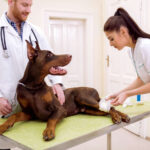
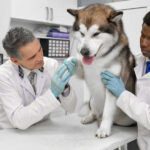
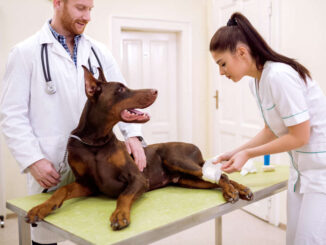

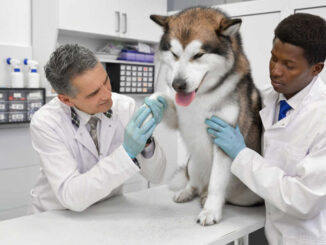
Be the first to comment